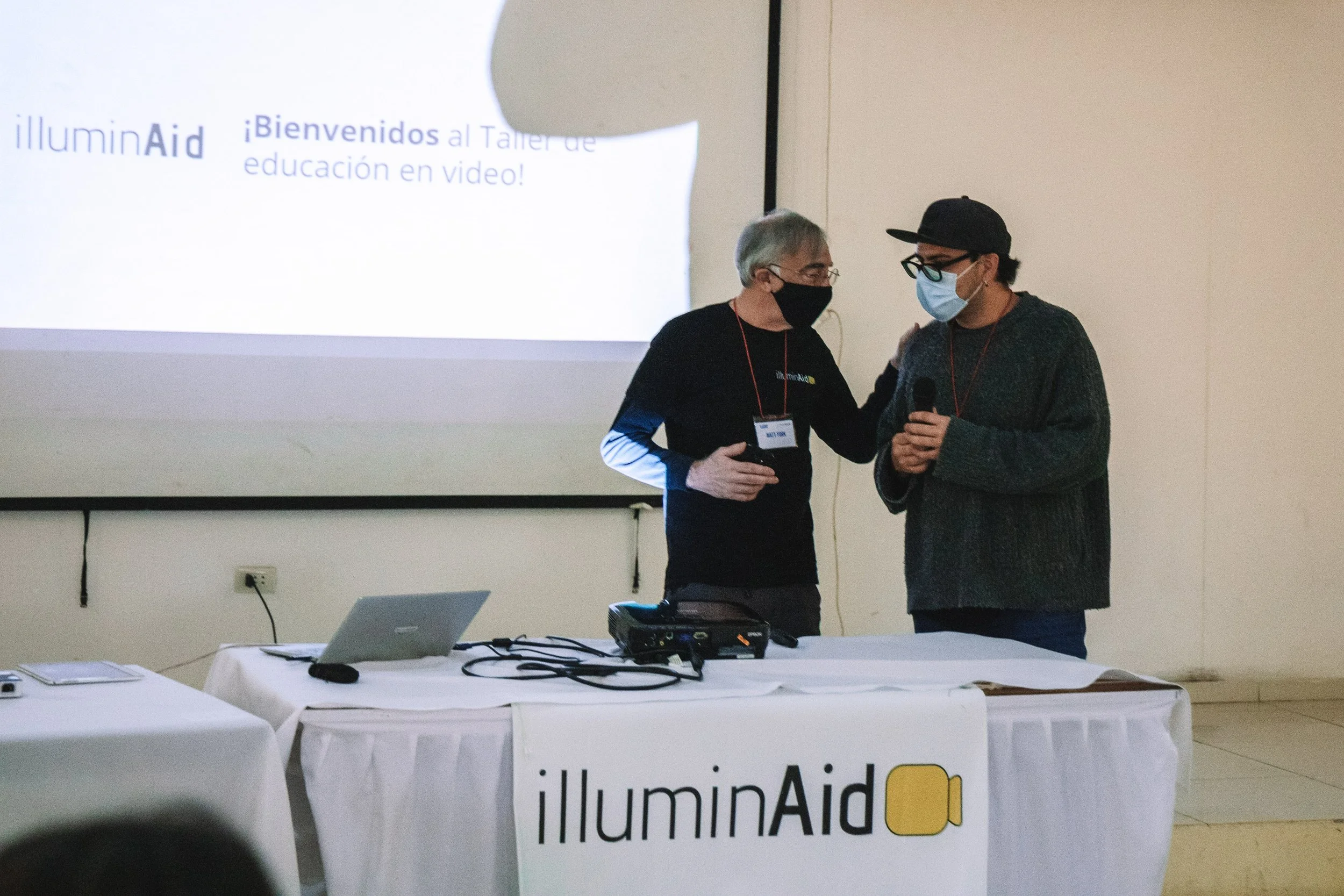How illuminAid’s Three-Part Intervention Delivers Lasting Value
At illuminAid, we believe that video can transform the way organizations reach underserved communities. Our approach is based on a three-pillar model: train, equip and empower. By pairing hands-on training with field-ready gear and sustained support, we help NGOs embed video-based behavior change into their programs.
Let’s take a closer look at these three pillars:
1. Train
We begin with a four-day Video Education Workshop (VEW) custom-designed for partner organizations. These workshops are hands-on and built around learning by doing: participants storyboard, shoot, edit and plan for the dissemination of real content during the workshop itself. Local Video Trainers (LVTs) often co-facilitate, providing translation, contextual insight and ongoing mentorship.
2. Equip
After training, we provide a kit of proven gear, including cameras, tripods, lav mics, cordless projectors capable of running without grid power, as well as solar or rechargeable power systems. Each tool is chosen for ruggedness, ease of use, and flexibility in remote settings.
3. Empower
Training and gear are just the start. We commit to one year of capacity development support. During that time, we help partners integrate video into programming, troubleshoot technical challenges and strategize for sustainable internal adoption. This support helps ensure that local staff gain confidence to continue producing content independently.
Real-World Impact
In Honduras, we partnered with local teams to produce videos that guide coffee farmers in turning harvest waste into compost — content now shared across remote regions to uplift yields and soil health. In Togo, our collaboration with the Ministry of Health and NGOs resulted in educational videos on hygiene, nutrition, and mosquito net use, which reached children and households in rural areas.
Because our model is community-centric, scalable and low-cost, it works across cultures and sectors. NGOs using video through illuminAid report deeper audience engagement, easier replication across locations, and stronger behavior change outcomes.

